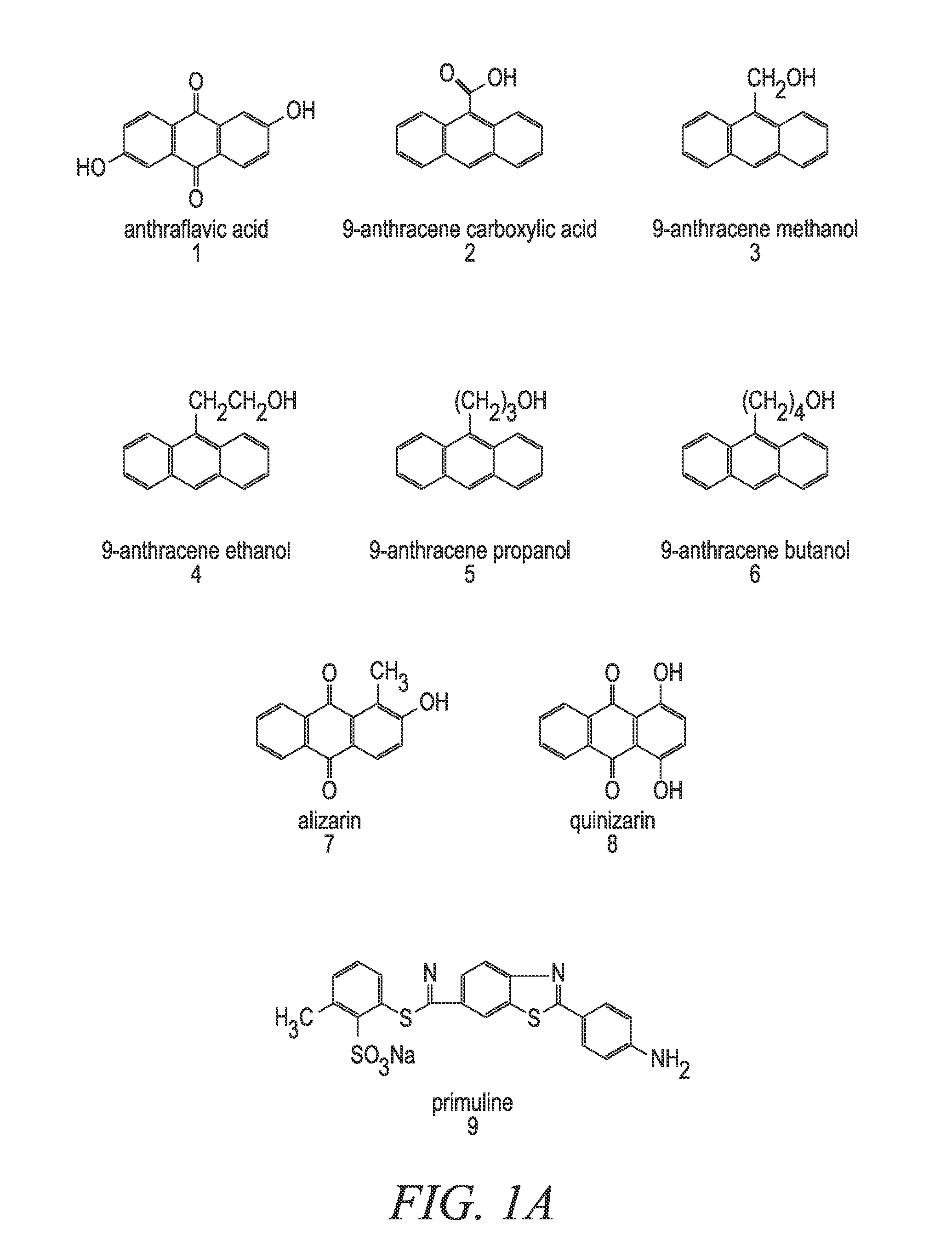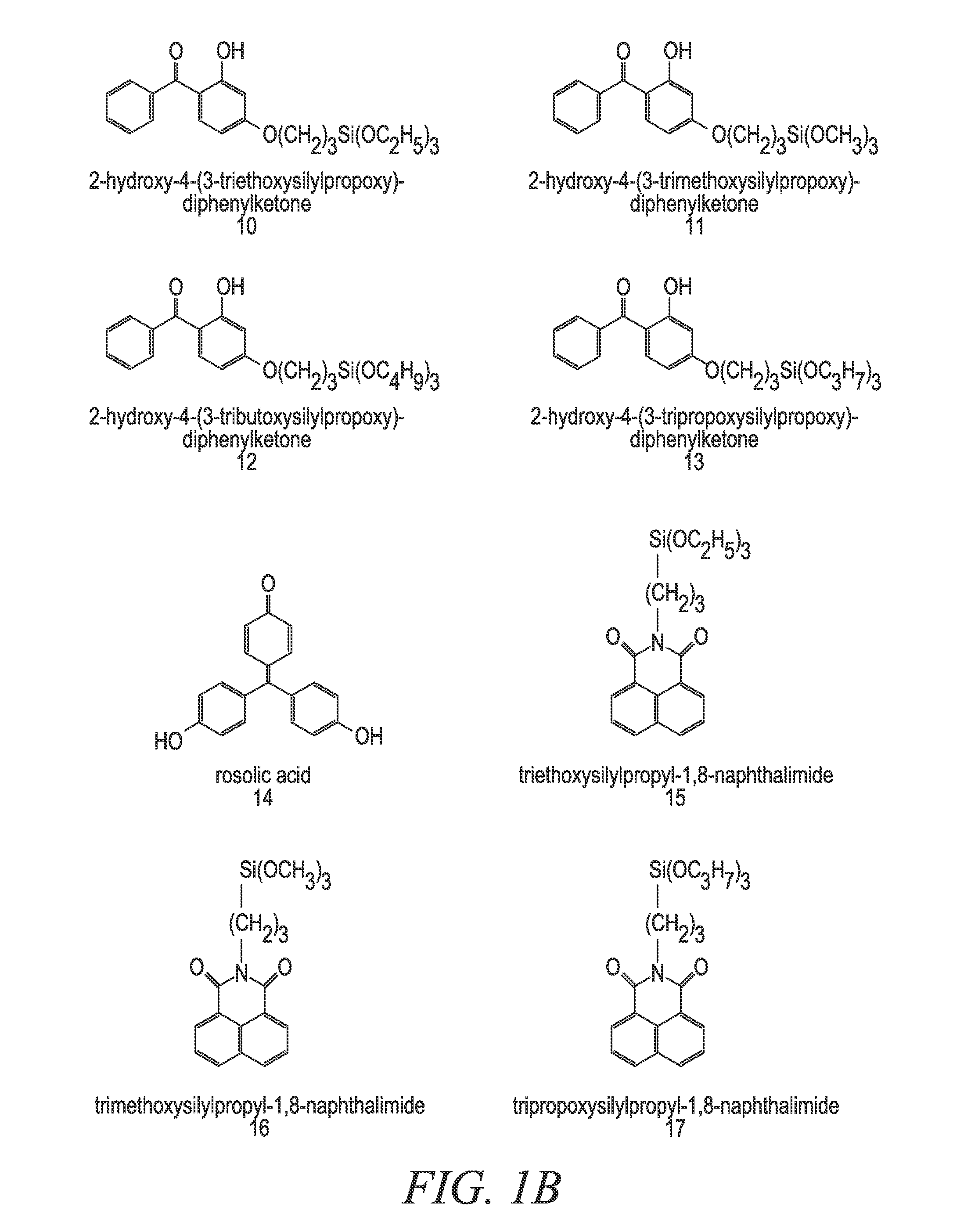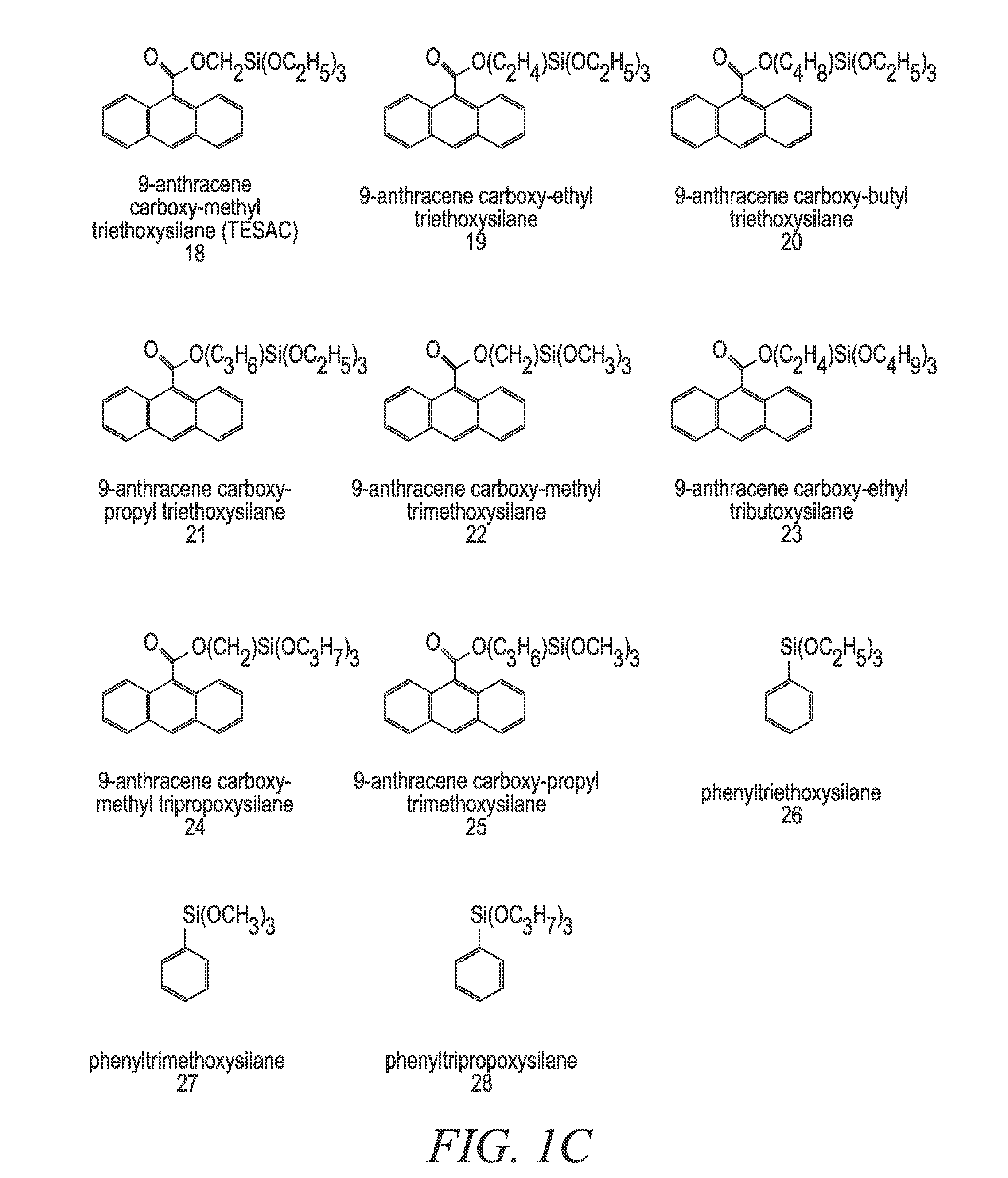Anti-reflective coating for photolithography and methods of preparation thereof
a technology of anti-reflective coating and photolithography, which is applied in the direction of photomechanical equipment, instruments, transportation and packaging, etc., can solve the problems of limiting usable process sequences, affecting introducing new challenges in the manufacture of devices with smaller feature sizes. achieve the effect of improving the compatibility or physical quality of the resulting film, improving the etch selectivity and/or stripping selectivity, and minimizing the effect o
- Summary
- Abstract
- Description
- Claims
- Application Information
AI Technical Summary
Benefits of technology
Problems solved by technology
Method used
Image
Examples
example 1
[0172]In a 22-liter flask 6497.86 grams solvent, 2633.78 grams TEOS, 1639.78 grams MTEOS, 958.97 grams 9-anthracene carboxy-methyl triethoxysilane, 119.24 grams 0.1 M nitric acid and 1425.58 grams deionized water were combined. The flask was refluxed and / or heated for 1 to 12 hours. To the solution, 932.80 grams of butanol and 20650.0 g of ethyl lactate was added. The acetone alone or the 2-propanol / acetone mixture that would have normally been used in the reaction is replaced with at least one replacement solvent. In one embodiment, a 2:1 mixture of ethanol / PGMEA is used as the at least one replacement solvent. In another embodiment, a 2:1 mixture of PGMEA / ethanol is used as the at least one replacement solvent. It is important to note that any of the compounds and / or mixtures found in Examples 6-21 can be substituted for the above-referenced compound. It is also important to note that even though Examples 6-21 deal with absorbing compounds and pH tuning agent addition, the pH tuni...
example 2
[0176]In a 22-liter flask 6331.20 grams 2-propanol, 3166.66 grams solvent, such as acetone, 2633.78 grams TEOS, 1639.78 grams MTEOS, 958.97 grams 9-anthracene carboxy-methyl triethoxysilane, 119.24 grams 0.1 M nitric acid and 1425.58 grams deionized water were combined. The flask was refluxed and / or heated for 1 to 12 hours. To the solution, 932.80 grams of butanol and 20650.0 g of ethyl lactate was added. The material modification agent added for this set of examples was the at least one high boiling solvent, which was in this case glycerol. For this set of experimental data, 1% glycerol was added to the mixture to eliminate voiding and to improve the % via fill in the absorbing composition coating material. It is important to note that any of the compounds and / or mixtures found in Examples 6-21 can be substituted for the above-referenced compound. It is also important to note that even though Examples 6-21 deal with absorbing compounds and pH tuning agent addition, the pH tuning a...
example 3
[0178]In a 22-liter flask 6331.20 grams 2-propanol, 3166.66 grams acetone, 2633.78 grams TEOS, 1639.78 grams MTEOS, 958.97 grams 9-anthracene carboxy-methyl triethoxysilane, 119.24 grams 0.1 M nitric acid and 1425.58 grams deionized water were combined. The flask was refluxed and / or heated for 1 to 12 hours. The heating / refluxing time was divided into four relatively equal time intervals, and at each time interval TMEOS was added in 0.2 g, 0.5 g, 1 g and 5 g amounts respectively. To the solution, 20650.0 g of ethyl lactate was added. Also, in some of the embodiments 932.80 grams of butanol was added after the TMEOS addition was completed. The material modification agent added for this set of examples was the at least one capping agent, which was in this case TMEOS. It is important to note that any of the compounds and / or mixtures found in Examples 6-21 can be substituted for the above-referenced compound. It is also important to note that even though Examples 6-21 deal with absorbin...
PUM
| Property | Measurement | Unit |
|---|---|---|
| wavelengths | aaaaa | aaaaa |
| wavelengths | aaaaa | aaaaa |
| wavelengths | aaaaa | aaaaa |
Abstract
Description
Claims
Application Information
 Login to View More
Login to View More - R&D
- Intellectual Property
- Life Sciences
- Materials
- Tech Scout
- Unparalleled Data Quality
- Higher Quality Content
- 60% Fewer Hallucinations
Browse by: Latest US Patents, China's latest patents, Technical Efficacy Thesaurus, Application Domain, Technology Topic, Popular Technical Reports.
© 2025 PatSnap. All rights reserved.Legal|Privacy policy|Modern Slavery Act Transparency Statement|Sitemap|About US| Contact US: help@patsnap.com



